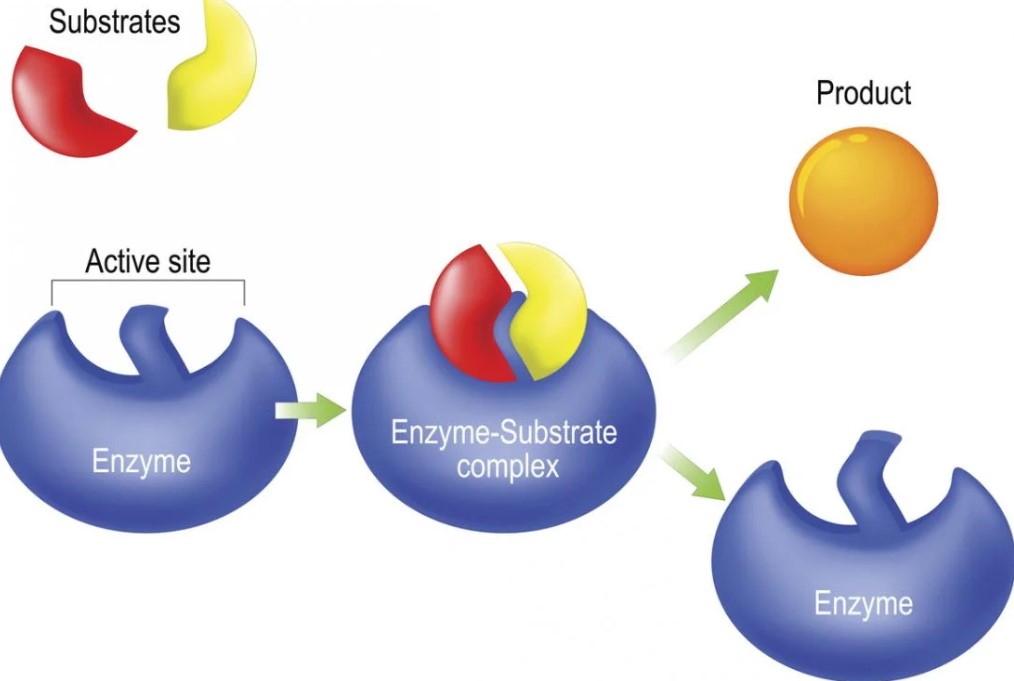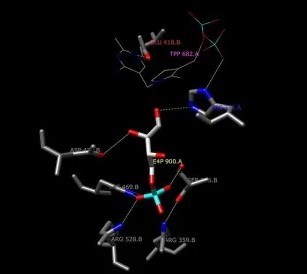In the complex world of biochemistry, enzymes like transaldolase and transketolase play critical roles in maintaining cellular health and metabolism. These enzymes, although less discussed outside of scientific circles, are pivotal in the metabolic pathways that convert sugars into energy, affecting everything from growth to disease resistance.
Transaldolase and transketolase are both enzymes involved in the pentose phosphate pathway, a crucial process in cellular metabolism. Transaldolase primarily helps in transferring three-carbon units, whereas transketolase transfers two-carbon units. This difference in function underpins varied, yet interconnected roles in generating nucleic acids, amino acids, and lipids.
These enzymes not only assist in the production of energy but also in the synthesis of critical biomolecules and the maintenance of oxidative balance within cells. They are essential for the proper functioning of the pentose phosphate pathway, which provides the necessary components for rapid cell division and antioxidant defense mechanisms.

Key Functions
Role of Transaldolase
Transaldolase is an enzyme crucial in the pentose phosphate pathway (PPP), a metabolic pathway parallel to glycolysis. It primarily facilitates the transfer of three-carbon units among sugar molecules, a critical step in the synthesis of ribose-5-phosphate. Ribose-5-phosphate is essential for the production of nucleotides and nucleic acids, which are vital components of DNA and RNA. This makes transaldolase integral to cellular growth and repair, as well as to the maintenance of genetic integrity.
Role of Transketolase
Transketolase also plays a significant role in the pentose phosphate pathway but operates differently by transferring two-carbon units from ketose donors to aldose acceptors. This function is key in balancing the cellular levels of various sugars, which helps in energy production and the synthesis of metabolic intermediates. Additionally, transketolase is involved in the generation of erythrose-4-phosphate, a precursor for the synthesis of aromatic amino acids and vitamins. This enzyme’s activity is therefore crucial for energy metabolism and the biosynthesis of vital compounds.
Structural Insights
Transaldolase Features
Transaldolase is a dimeric enzyme, usually consisting of two identical subunits that create the active site in their interface. Each subunit is composed of approximately 350 amino acids and features a Schiff base-forming lysine residue critical for its catalytic mechanism. The structural layout of transaldolase facilitates the precise interaction with substrates, allowing for efficient catalysis.
Transketolase Features
Transketolase is larger, generally found as a multimeric protein composed of several subunits, each containing thiamine pyrophosphate (TPP) as a coenzyme. The presence of TPP is essential for the enzyme’s ability to catalyze the transfer of two-carbon groups. The enzyme’s structure allows it to bind with multiple substrates, thereby enhancing its versatility and importance in metabolic pathways.
Enzymatic Mechanisms
Transaldolase at Work
The enzymatic action of transaldolase involves:
- Binding of the substrate at the active site.
- Formation of a Schiff base between the enzyme’s lysine residue and the substrate’s keto group.
- Transfer of a dihydroxyacetone group to an acceptor sugar. This process results in the rearrangement of carbon skeletons, vital for maintaining an adequate supply of different types of sugars needed for various cellular functions.
Transketolase in Action
Transketolase operates through a similar yet distinct mechanism:
- Binding of the ketose substrate to the TPP coenzyme at the active site.
- Decarboxylation of the ketose, resulting in the formation of an active glycolaldehyde group.
- Transfer of this two-carbon unit to an aldose sugar, forming a new ketose. This enzymatic reaction is essential for the regeneration of ribose-5-phosphate and for providing metabolic flexibility in cellular processes.
Biological Roles
Transaldolase in Cellular Processes
Transaldolase is not merely a participant in sugar metabolism; it plays a pivotal role in:
- Regulating the ratio of NADPH to ribose-5-phosphate in cells, crucial for fatty acid synthesis and antioxidant defense.
- Supporting rapid cell division in tissues such as bone marrow and skin, where it aids in DNA synthesis and repair.
Transketolase and Energy Production
Transketolase is integral in:
- Enhancing the efficiency of the pentose phosphate pathway, thus supporting the generation of ATP through glycolysis.
- Facilitating the link between energy production and the synthesis of crucial biomolecules, thereby supporting overall metabolic balance.

Health Implications
Deficiencies and Disorders
Deficiencies in transaldolase and transketolase are linked to a range of metabolic disorders. A well-known condition related to transaldolase deficiency is Transaldolase Deficiency, a rare genetic disorder that can lead to problems like liver dysfunction, cirrhosis, and hemolytic anemia. The absence or malfunction of this enzyme disrupts the pentose phosphate pathway, leading to the accumulation of toxic substances and oxidative stress in cells.
Transketolase deficiencies, while less commonly identified as a distinct clinical condition, can contribute to complications in diseases such as Wernicke-Korsakoff syndrome, a neurological disorder often associated with chronic alcoholism. This syndrome results from a deficiency in thiamine (vitamin B1), which is crucial for transketolase activity. The reduced enzyme activity impairs the brain’s carbohydrate metabolism, leading to severe neurological symptoms.
Enzymes and Disease Prevention
Both transaldolase and transketolase play roles in maintaining cellular health by managing oxidative stress and producing nucleic acids and proteins. Adequate levels and functioning of these enzymes may help prevent the onset of metabolic diseases, such as diabetes and cancer, where altered metabolism is a common feature. The antioxidants produced through the pentose phosphate pathway help neutralize free radicals, potentially reducing the risk of chronic diseases.
Comparative Analysis
Similarities Between Enzymes
Transaldolase and transketolase share several similarities:
- Both are key components of the pentose phosphate pathway.
- Each enzyme catalyzes reactions involving sugar molecules, crucial for the production of energy and biomolecules.
- Both are essential for cellular defense against oxidative stress by regulating the amount of NADPH, a major antioxidant in cells.
Distinctive Attributes
Despite their similarities, transaldolase and transketolase have distinctive features:
- Transaldolase specializes in transferring three-carbon units, whereas transketolase transfers two-carbon units.
- The biochemical mechanisms differ, with transaldolase forming a Schiff base with substrates, and transketolase requiring thiamine pyrophosphate for its activity.
Research and Developments
Recent Studies on Transaldolase
Recent studies have explored transaldolase’s role in immune function and its potential as a biomarker for certain cancers. Research indicates that transaldolase levels may be elevated in some types of cancer, suggesting its involvement in the altered metabolism seen in cancer cells. This discovery opens potential avenues for targeted cancer therapies that could inhibit transaldolase activity.
Advances in Transketolase Research
Transketolase has been at the forefront of research related to its role in diabetic complications. Advanced glycation end products, which are linked to the progression of diabetes, appear to be mitigated by enhanced transketolase activity. This has led to the development of thiamine-based therapies aimed at boosting transketolase activity, showing promise in delaying or preventing some diabetic complications.
Practical Applications
Biotechnological Uses
Transaldolase and transketolase are exploited in biotechnology for the synthesis of complex sugars and rare sugars, which are valuable in pharmaceutical and food industries. For example, transketolase is used in enzymatic reactions to produce erythritol, a sugar alcohol used as a low-calorie sweetener.
Therapeutic Potential
The therapeutic potential of these enzymes extends beyond their metabolic functions:
- Transaldolase could be targeted in therapies for liver diseases and certain cancers, given its pivotal role in cellular metabolism and detoxification.
- Transketolase is being explored as a therapeutic target for managing thiamine deficiency and its implications in neurological diseases and diabetes.
FAQs
What is transaldolase?
Transaldolase is an enzyme that plays a vital role in the pentose phosphate pathway, facilitating the transfer of three-carbon units. This action is essential for the synthesis of nucleotides and amino acids, crucial for DNA replication and repair.
What is transketolase?
Transketolase is another enzyme integral to the pentose phosphate pathway. It is responsible for the transfer of two-carbon units, critical in the production of energy and synthesis of metabolic intermediates.
How do transaldolase and transketolase differ?
While both enzymes function in the pentose phosphate pathway, transaldolase transfers three-carbon units and is crucial for nucleotide synthesis, whereas transketolase transfers two-carbon units, playing a key role in energy metabolism and cellular growth.
Why are these enzymes important in medicine?
Understanding the functions and mechanisms of transaldolase and transketolase can lead to better insights into metabolic diseases and potential therapeutic targets for conditions like diabetes and cancer, where metabolism is significantly altered.
Can deficiencies in these enzymes affect health?
Yes, deficiencies in transaldolase or transketolase can lead to serious health issues, including metabolic disorders and developmental abnormalities. Early diagnosis and treatment are crucial for managing these conditions.
Conclusion
Transaldolase and transketolase are more than just cogs in the cellular machinery; they are essential for the health and efficiency of life at a molecular level. Their roles in the pentose phosphate pathway highlight the intricate balance of metabolic processes necessary for cell survival and function.
The ongoing research and growing understanding of these enzymes continue to uncover their potential implications in health and disease, offering promising avenues for future therapeutic interventions. This exploration not only enhances our grasp of biological complexities but also paves the way for innovative medical solutions.

